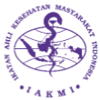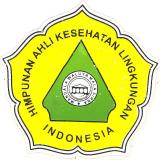A TELENURSING SERVICE'S IMPACT ON COVID-19 PATIENTS: LITERATURE REVIEW
Downloads
Background: Pandemic Corona Virus Disease 2019 (COVID-19) is an infectious disease caused by SARS-COV2. COVID-19 has become a world pandemic that poses various risks throughout the world such as an increase in the number of patients and the risk of disease development in the world health system, especially nursing. The WHO reports that technology has a growing role in education and good work practice. Telenursing is well defined as the application of telecommunications and information technology to provide remote nursing practice. Purpose: This study aimed to examine the process of establishing a telenursing service for COVID-19. Methods: Three databases”PubMed, Google Scholar, and Research Gate”were used to find research publications. English-language keywords included in the literature search are telenursing OR tele-nursing and Covid-19, with the inclusion of works from 2019 to 2021. Results: Five studies that matched the inclusion criteria and the goals of this literature review were examined from a total of 936 research articles. Following the critical evaluation of five articles, a simplified thematic analysis was performed. This research review's main finding was that non-contact counseling services, instruction, and nursing care are important. Conclusion: Application of the telenursing program improved information technology and enabled the delivery of nursing care remotely. As an additional treatment option for patients with COVID-19, other remote self-care instruction techniques may be applied.
Chakeri, A., Jalali, E., Ghadi, M. R., Mohamadi, M. 2020. Evaluating the effect of nurse-led telephone follow-ups (tele-nursing) on the anxiety levels in people with coronavirus. Journal of family medicine and primary care, 9(10), 5351-5354. https://doi.org/10.4103/jfmpc.jfmpc_847_20
Donati, D., Valentina, B., Claudia, C., Marinis, M. 2019. Compliance with Standard Precautions among Clinical Nurses: Validity and Reliability of the Italian Version of the Compliance with Standard Precautions Scale (CSPS-It). International Journal of Environmental Research and Public Health, 16(1), 121. https://doi.org/10.3390/ijerph16010121
Gholipour, B. et al. 2021. Effect of Telenursing Education on the Comfort of Patients With COVID-19 in Home Quarantine. Journal of Modern Family Medicine, 1(21), pp. 2–13.
Heo, H., Lee, K., Jung, E., Lee, H. 2021. Developing the first telenursing service for COVID-19 patients: The experience of South Korea. International Journal of Environmental Research and Public Health, 18(13), 1–13. https://doi.org/10.3390/ijerph18136885
Kord, Z., Fereidouni, Z., Mirzaee, M. S., Alizadeh, Z., Behnammoghadam, M., Rezaei, M., Abdi, N., Delfani, F., Zaj, P. 2021. Telenursing home care and COVID-19: a qualitative study. BMJ Support Palliat Care. BMJ Supportive and Palliative Care, 29(bmjspcare), 003001. https://doi.org/10.1136/bmjspcare-2021-003001
Liao, Xue-Lian., Chen, Hong., Li, Zhen., Wang, Bo1., Zhang, Zhong-Wei1., Li, Wei-Min., Liang, Zong-An., Tang, Jin., Wang, Jian., Shi, Rui., Jin, Xiao-Dong., Kang, Yan. 2021. Critical care for severe coronavirus disease 2019: a population-based study from a province with low case-fatality rate in China. Chinese Medical Journal, 134(1), 98-100. https://doi.org/10.1097/cm9.0000000000001187
World Health Organization (WHO). 2020. Corona Virus Desease. Acces from: https://www.who.int/emergencies/diseases/novel-coronavirus-2019
Reierson, I. Å., Solli, H. & Bjørk, I. T. 2015. Nursing students’ perspectives on telenursing in patient care after simulation. Clinical Simulation in Nursing, 11(4), 244–250. https://doi.org/10.1016/j.ecns.2015.02.003
Rizk, S. & Siam, B. 2021. Effect of Tele-nursing Education Program on Nurses’ Compliance with Standard Precautions during COVID- 19 Pandemic. Assiut Scientific Nursing Journal, 9(25), 10–19. https://dx.doi.org/10.21608/asnj.2021.73190.1166
Hughes RG. 2008. Patient Safety and Quality: An Evidence-Based Handbook for Nurses. Rockville (MD): Agency for Healthcare Research and Quality (US). Availabe at https://pubmed.ncbi.nlm.nih.gov/21328752/
Sjattar, E. L., Majid, A., Arafah, R., Syam, Y., Gaffar, I. & Harisa, A. 2021. Pengaruh health edukasi berbasis telenursing terhadap peningkatan pengetahuan dan kemampuan pasien covid-19 dalam melaksanakan perawatan mandiri dirumah. Jurnal Kesehatan, 14(2), 104-110. https://doi.org/10.24252/kesehatan.v14i2.24632
Telehealth Resource Centers. no date. Official web site of the U.S. Health Resources & Services Administration. Acces from: https://www.hrsa.gov/library/telehealth-resource-centers.
Copyright (c) 2024 Journal of Public Health Research and Community Health Development

This work is licensed under a Creative Commons Attribution-NonCommercial-ShareAlike 4.0 International License.
Copyright of the article is transferred to the journal, by the knowledge of the author, whilst the moral right of the publication belongs to the author. In order to be accepted and published by JPH RECODE, author(s) submitting the article manuscript should complete all the review stages. By submitting the manuscript, the author(s) agreed to these following terms:
The copyright of accepted articles shall be assigned to JPH RECODE as the publisher of the journal. The intended copyright includes the rights to publish articles in various forms (including reprints). JPH RECODE maintain the publishing rights to the published articles.
Authors are permitted to disseminate published article by sharing the link/DOI of the article at JPH RECODE. Authors are allowed to use their articles for any legal purposes deemed necessary without written permission form JPH RECODE with an acknowledgement of initial publication to this journal.
The Copyright Transfer Agreement Form can be downloaded ON THIS FORM.





















